As if Tskaltubo did not already affect me in ways that are hard to put into words, I was determined to explore yet another mostly abandoned “Soviet town” during this trip of mine to Georgia. This one is called Chiatura, and it used to be a bustling mining town with a ton of cable cars that ferried its thousands of miners to their destinations every day. Today, it looks like a ghost town, a husk of its former self. Join me in this adventure, as I try my best to uncover the changes that occurred in the mysterious town of Chiatura.
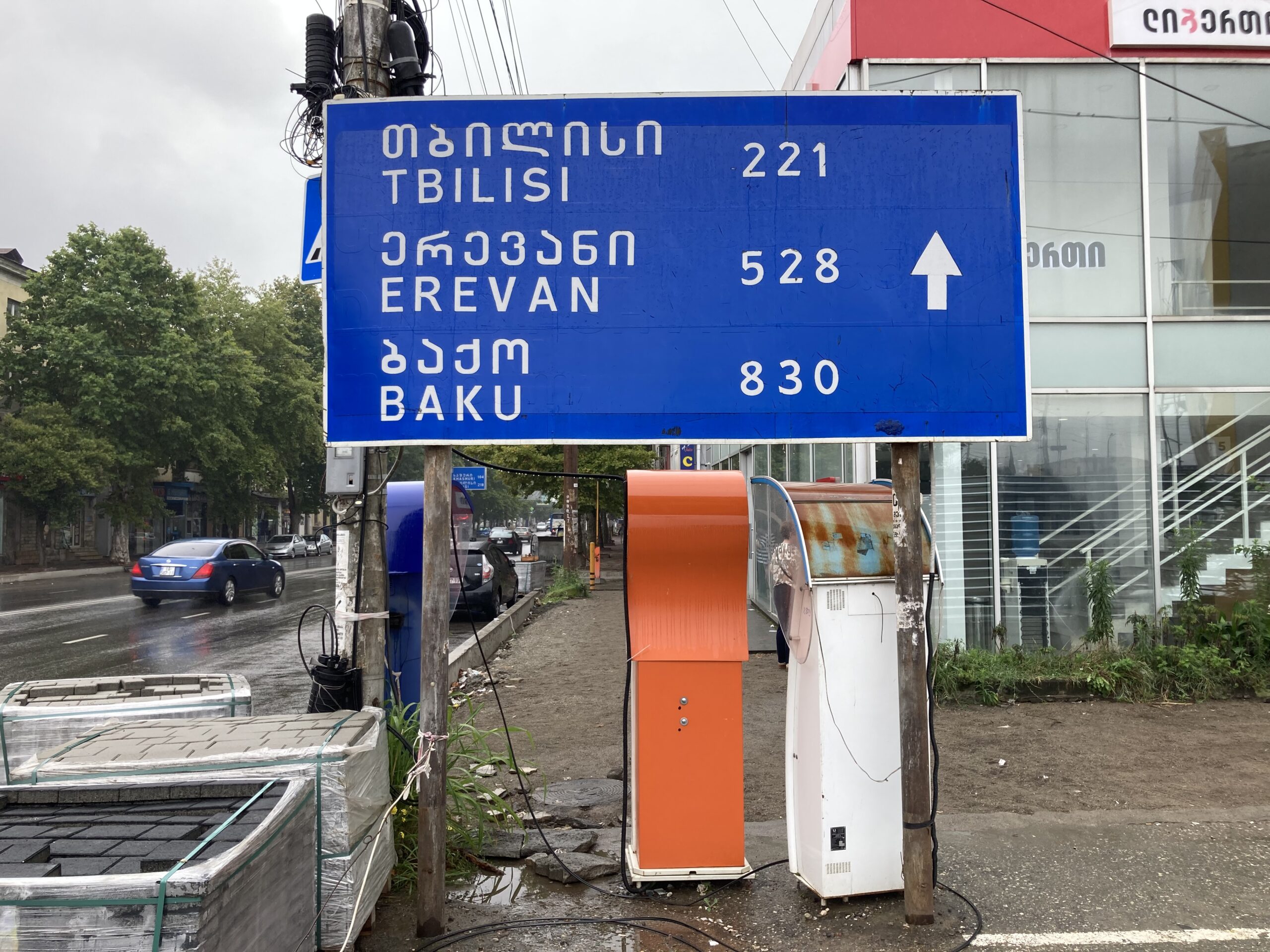
My day was off to a great start when I took a bus to go to the central bus terminal in Kutaisi. Just a few meters before the entrance to the terminal, I was greeted with this sign. I mean, what to say here? Three capitals in one go, not that you can go about seeing them in this direction without being questioned and denied an entry at the border with Azerbaijan, but still, what a great sign!
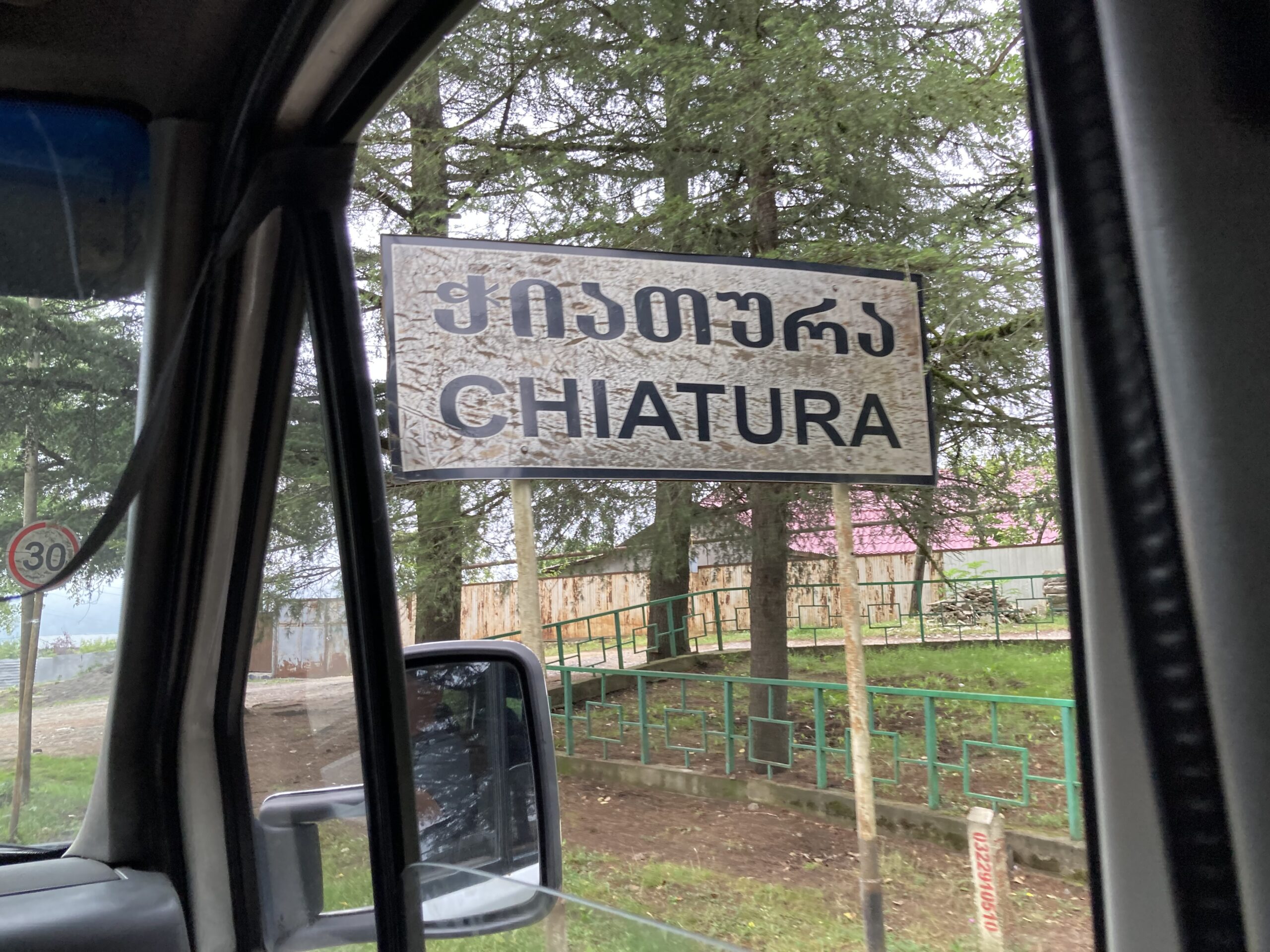
The sign in the early morning was not the only one that mesmerized me. After shouting “Chiatura” in the middle of the bus terminal for a while, I was escorted to a minibus by a worried looking grandpa, who likely did not want me to bother anyone else with my voice in the morning. You pay 10 GEL one way, and the journey takes an arduous two hours. I say arduous because that was no “normal” road. Mountainous terrain met foggy weather, and what happened was us travelling in the speed of a snail in terrain that looked like it could fit in any Silent Hill game. I was told to never visit Chiatura when it rained or when it was foggy, so imagine my relief when I saw that the city itself (and the sign at its entrance) was spared from the terrible weather conditions that we endured in the preceding hours.
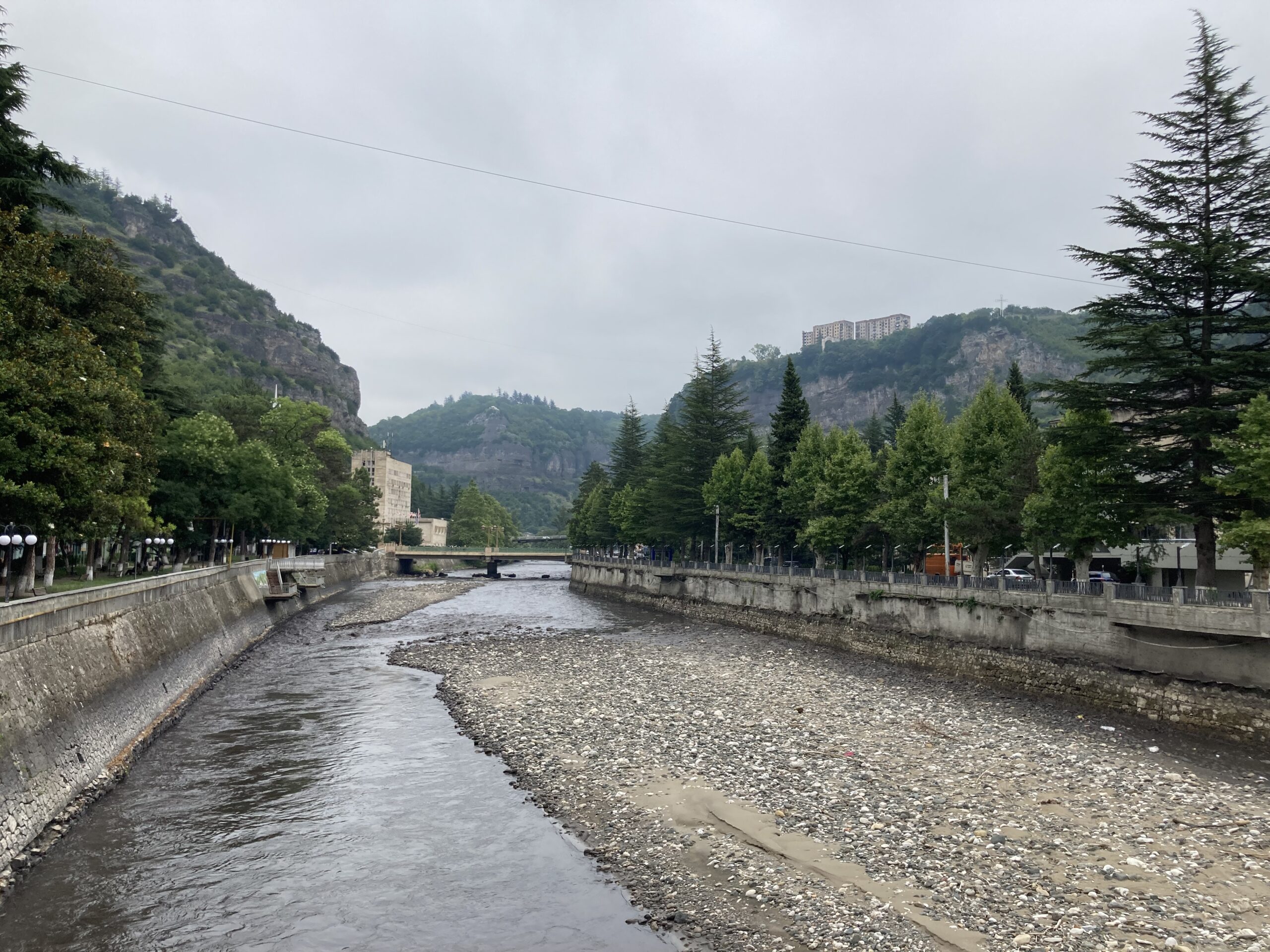
The Kvirila river cuts the town of Chiatura in two, which itself is founded in what I can only describe as a wide ravine. Mineral deposits on hills that surround the town and beyond are the main reason why this town exists, and the terrain on which it is found explains the insane amount of cable cars that the city hosted once upon a time.
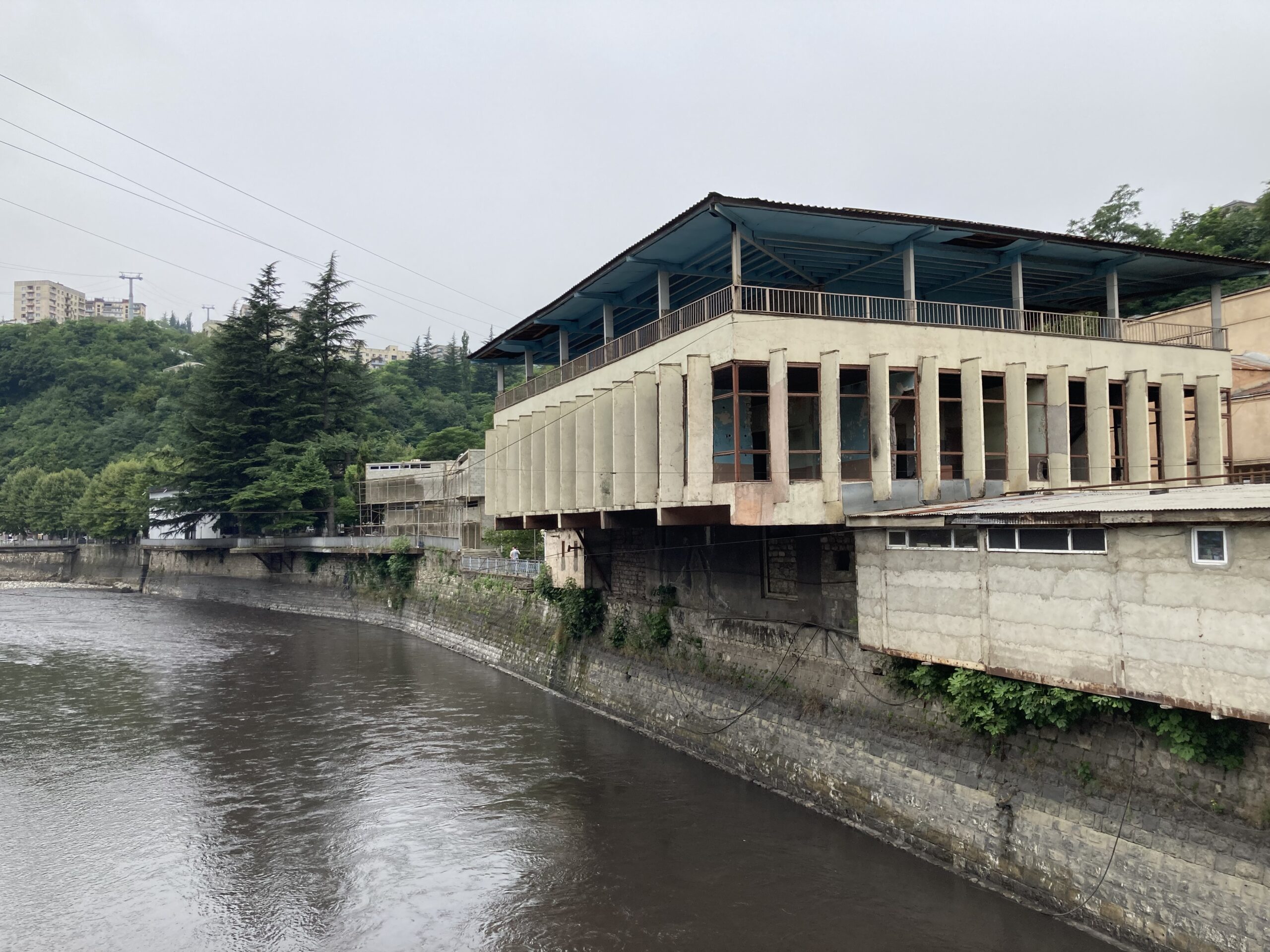
Chiatura was once a home to more than 30000 people, today that number hovers just above 10000. That should already tell you a thing or two about this town, that it is dying. 17 cable cars that worked here since times immemorial ceased their operations in 2021, to be replaced by just four new cable cars that made commuting easier for a tiny portion of the population. Some mines are still functional, some are not, and the massive metalworks in the nearby town of Zestafoni certainly saw better days, when it would drain the resources mined here to turn them into something more useful than some odd looking ores.
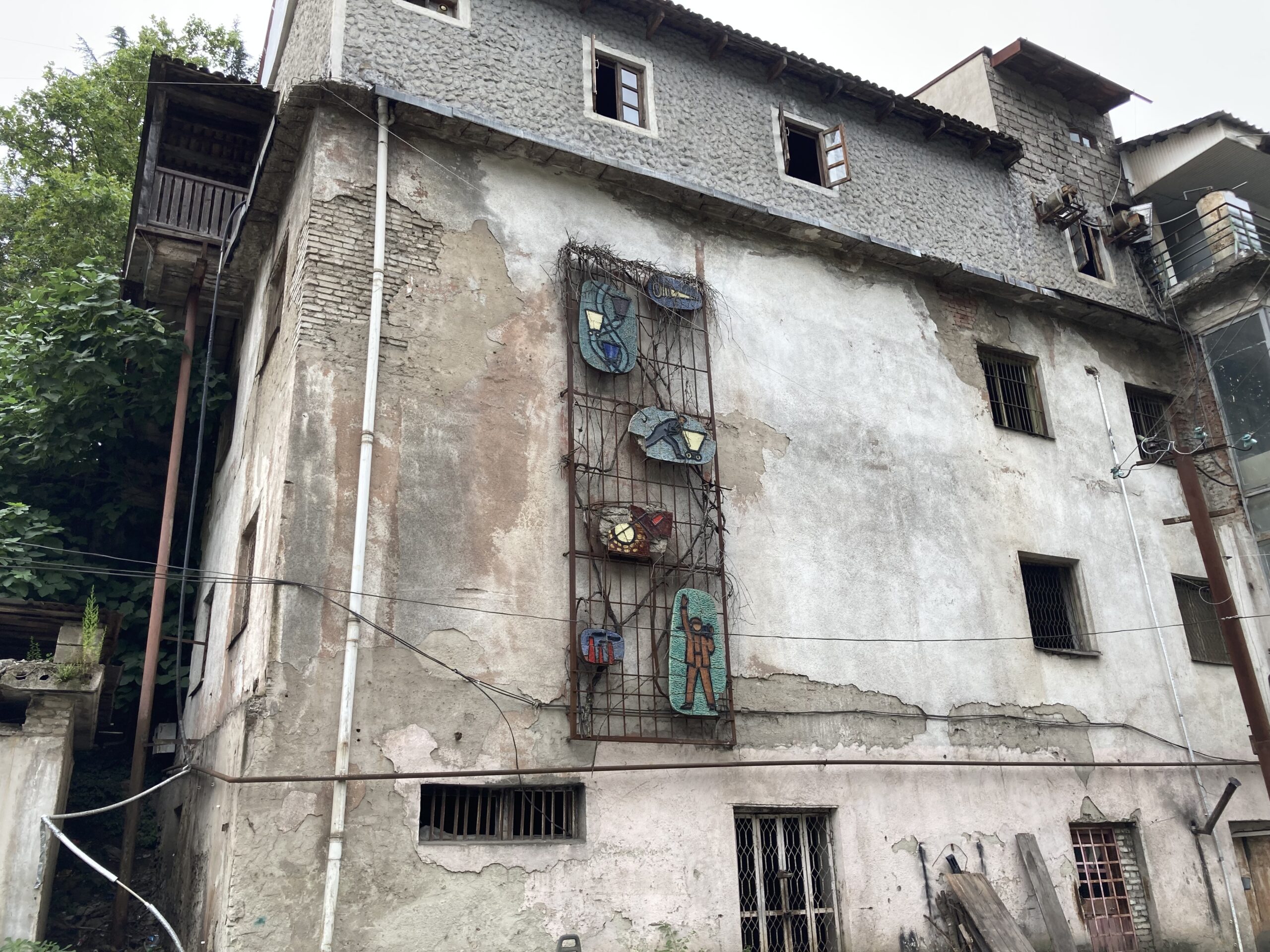
Most buildings in town are empty, even in its more central parts like the cafe that stood atop the river in the previous photo, or this simple house which only had a single inhabited room in it. Most infrastructure is in ruins, and little care is given to the rusty metal laying all around by the locals and foreigners alike.
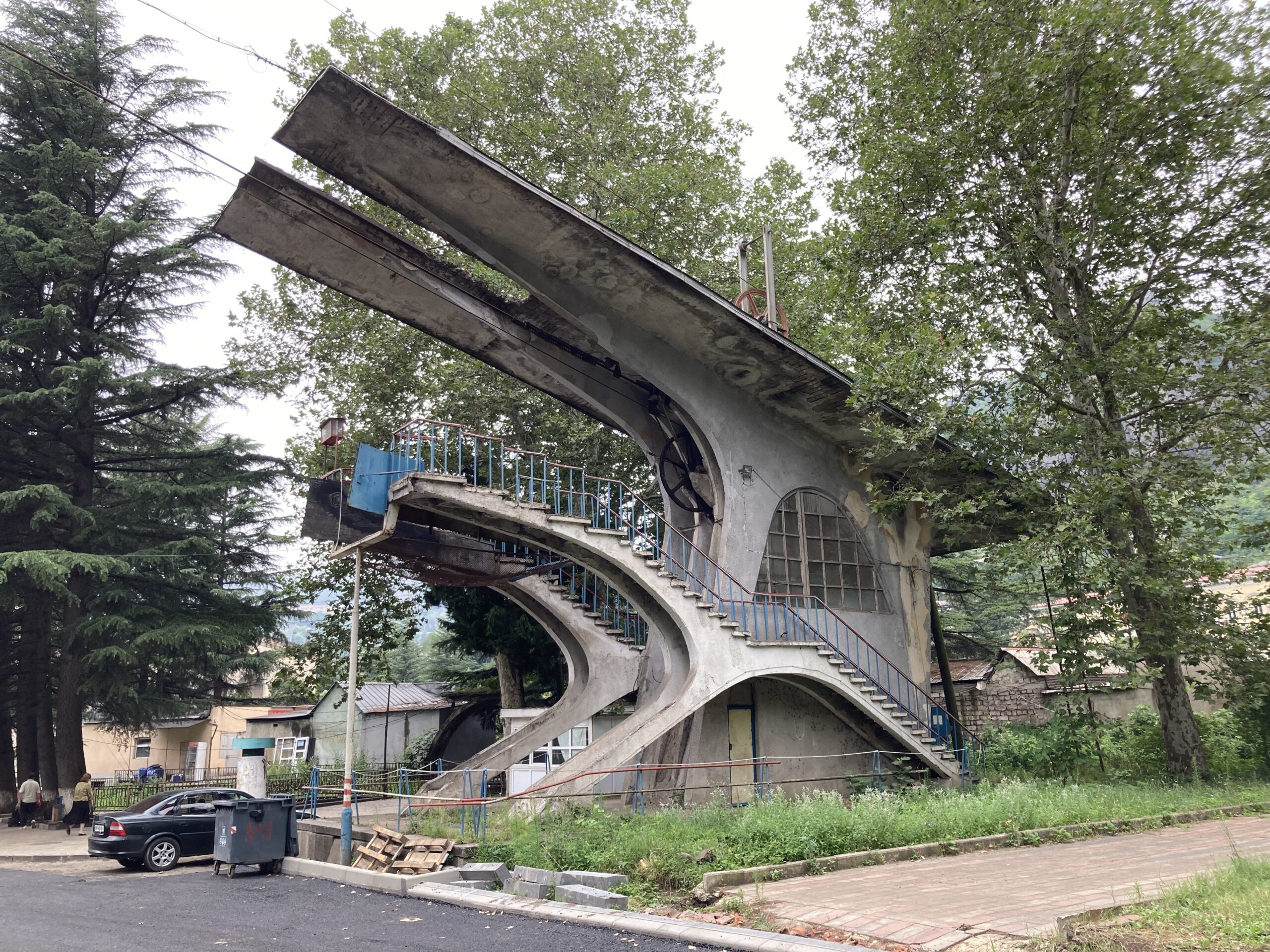
On paper, these old cable car stations are under the protection of Georgian authorities, who see them as a part of their heritage that will be (eventually) restored to their former glory. Sadly, there does not seem to be any funding for any of that these days, and these stations seem to just wait for their fate, slowly rotting away right under our noses.
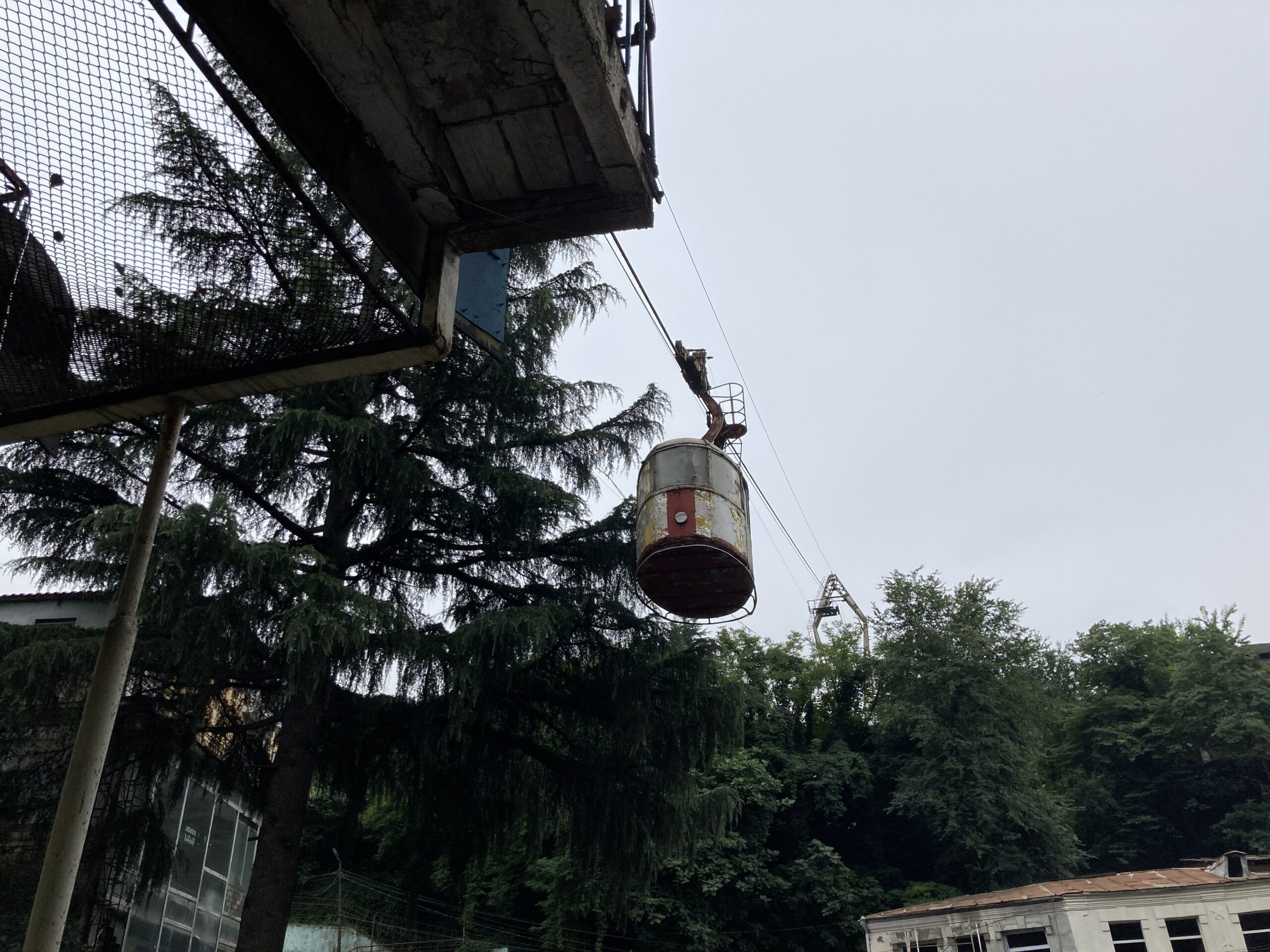
These were the original cable cars that were used until 2021. Now, despite being an avid traveller who does have a taste for some adventure, even I can see how these were quite old and dangerous by the time they were decommissioned. Contrary to some, I actually have no issues with them being replaced by newer models. I wished the newer models kept some of the aesthetics in place, but that is difficult to do when you are importing them from abroad. “Please make them look like they were made by some Soviet engineers” would not look very professional on a business proposition…

There are some pretty sights all around Chiatura, despite the overall lack of people and emptiness of buildings in it. It does help that almost any shot taken in town seems to have a natural green background to it, thanks to the hills that surround (and technically feed) the town.
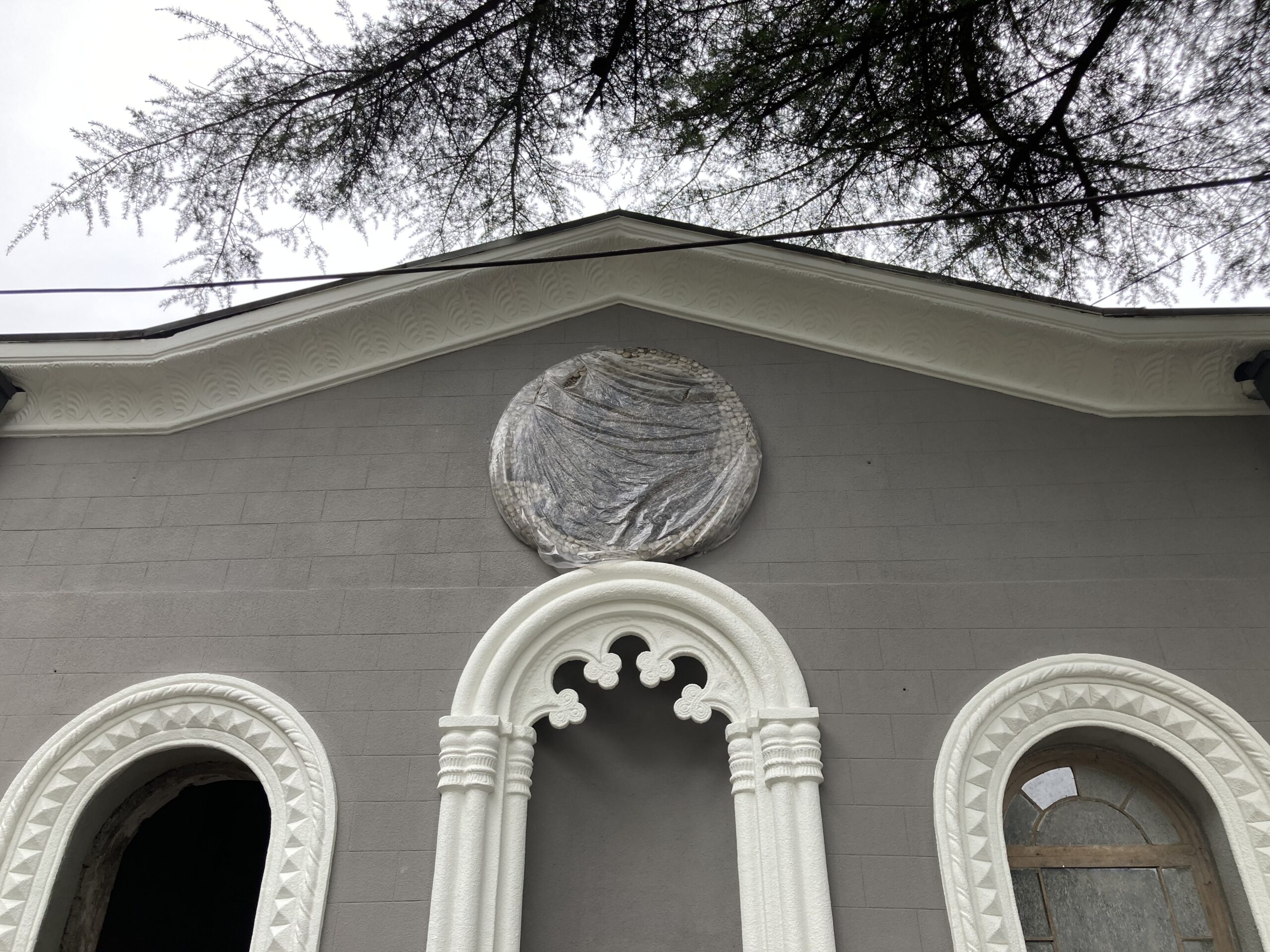
Though up until this point I was having a jolly good time in Chiatura, something was about to really boil my blood. As I was walking around, I came across this old terminal building, which I recognized from a YouTube video from a few years back. This was the place with the depiction of Stalin and Lenin side by side on its front entrance, and you can make that out even now. The problem is, someone thought it would be such a great idea to pull some pieces of transparent plastic over it… You can make it out, but you cannot see it, you cannot enjoy it, gaze upon it as you like. I understand the war in Ukraine made things only harder for all these ex-Soviet countries when it comes to policy making vis-à-vis their relations with Russia today, and in relation to that, with their look to their own shared histories. However, this just makes no sense. I am not saying I would be happier if it was fully destroyed, but to have it there, and to just cover it up to keep it from the sights (and “hopefully” minds) of people is just ridiculous… I really hope that nothing bad happens to this piece of history in the near future, though I cannot get my hopes up too much. Entry was barred to the site already, and it seemed like it was destined for destruction. Let us hope that I am mistaken.
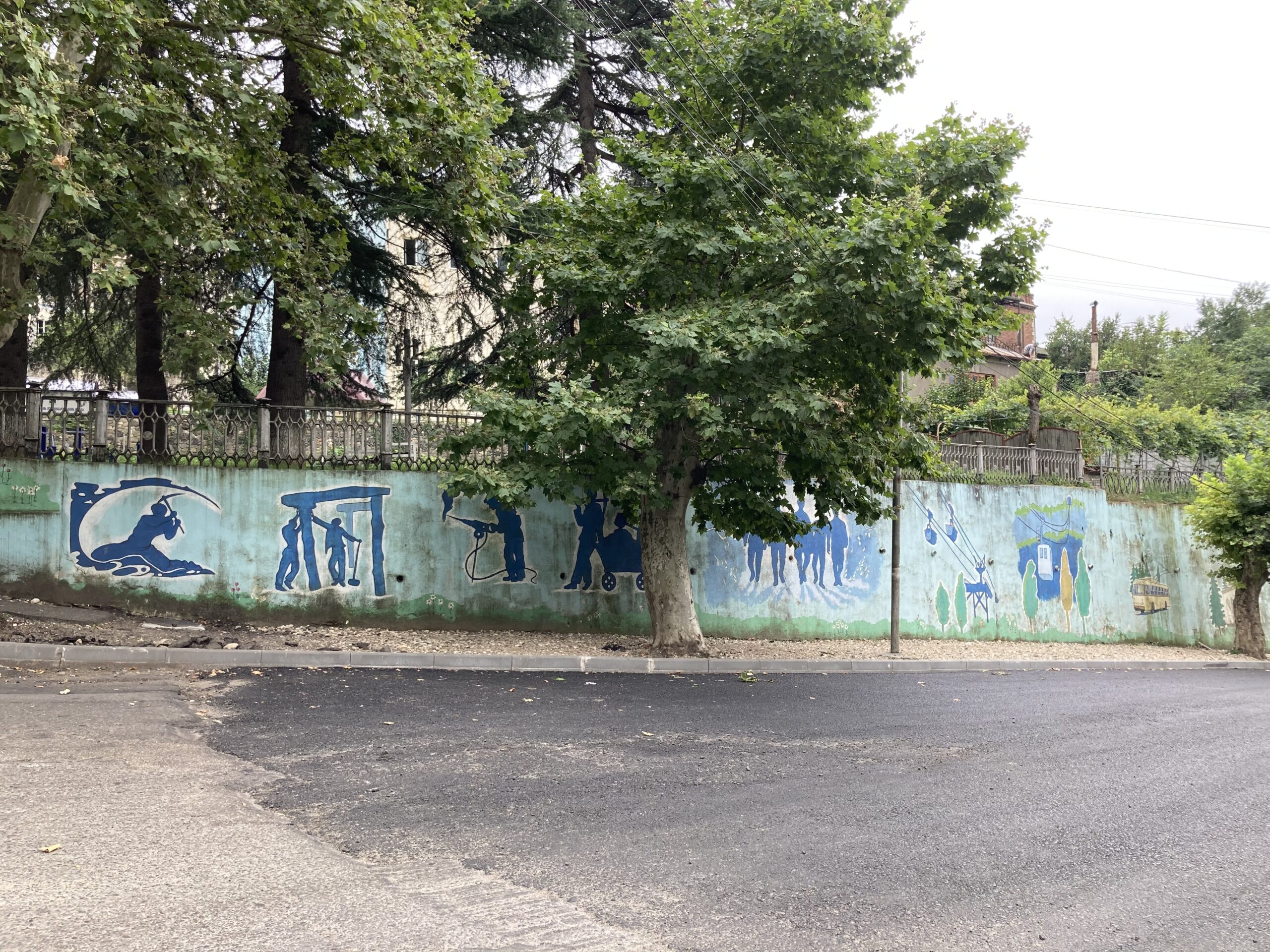
Though not Soviet-made, some graffiti like this adorn the mostly abandoned streets of modern Chiatura quite beautifully. You can see how the town was built on mining, and how the cable cars came to the rescue of said miners, drastically improving the living standards, as well as the productivity of the mines in question.
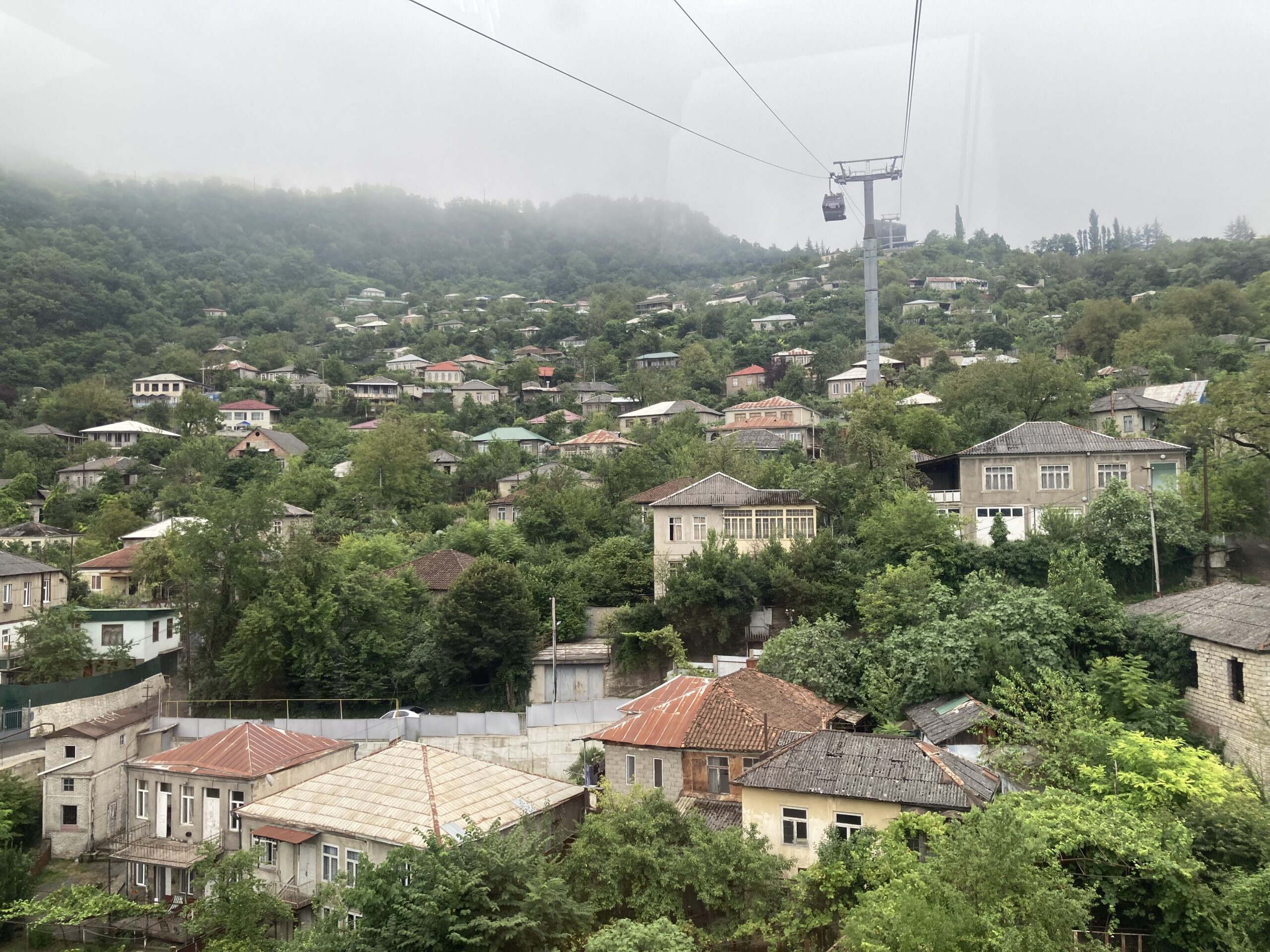
I was in Chiatura on a Sunday, and it turned out to be the worst day to go there… One of the four cable cars did not work that day, and the last bus that left the town would leave at 4 pm, instead of much later on as is the case with other days. Still, in what little time I had, I had the pleasure to try all three new cable cars that I actually could. They were all such a joy to ride, smooth, with beautiful views on all sides, and locals chattering all around you.
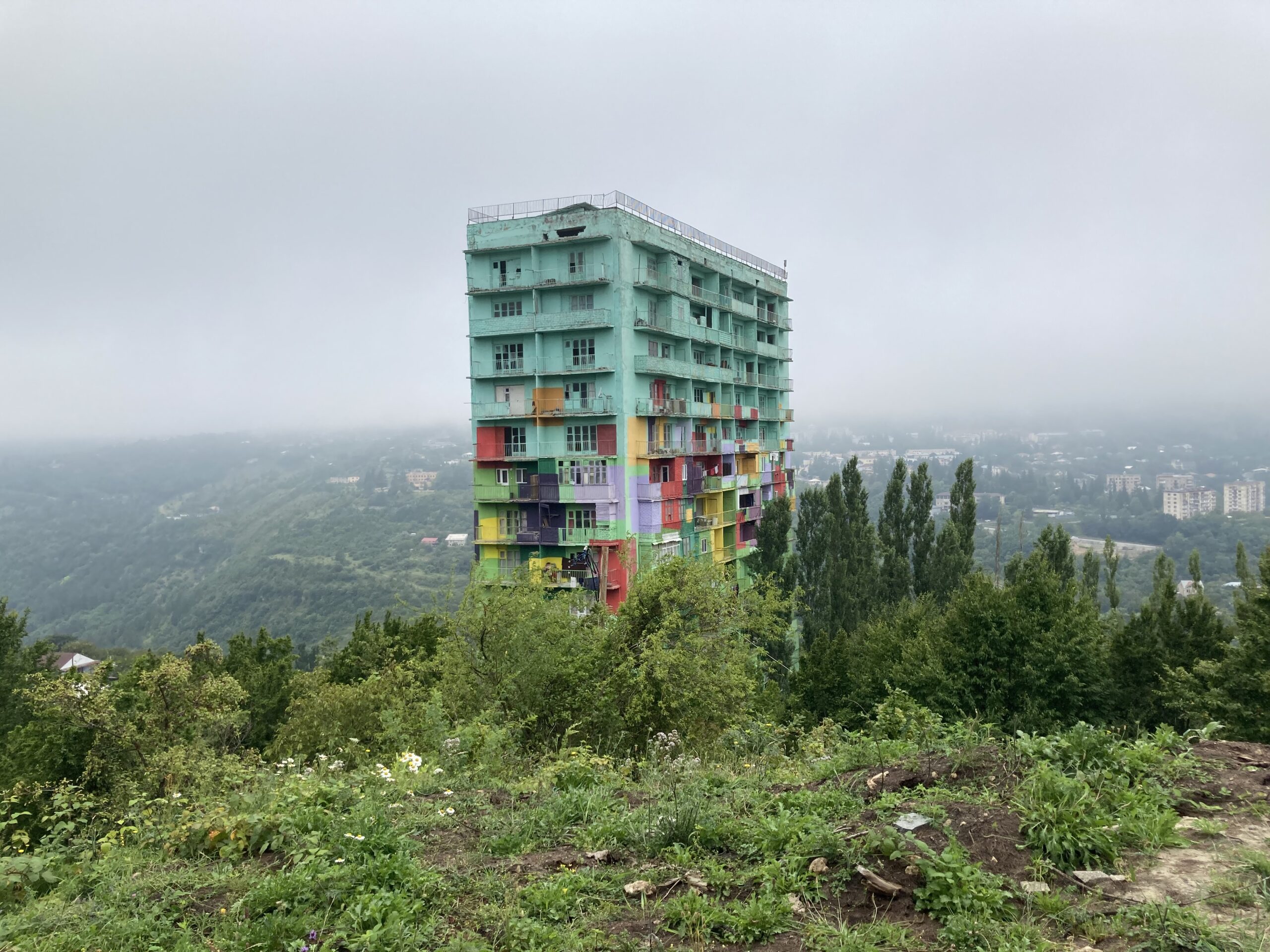
The one that goes to the Sanatorium station was my favourite one for sure. Not only do you get the best views of town from above, but you also come across odd looking apartment blocks like this one. Besides its colourfulness, I cannot believe just how hard life must be for those who call it home today, given how isolated it is from the rest of the town, in a town that itself is quite isolated from the rest of the world…
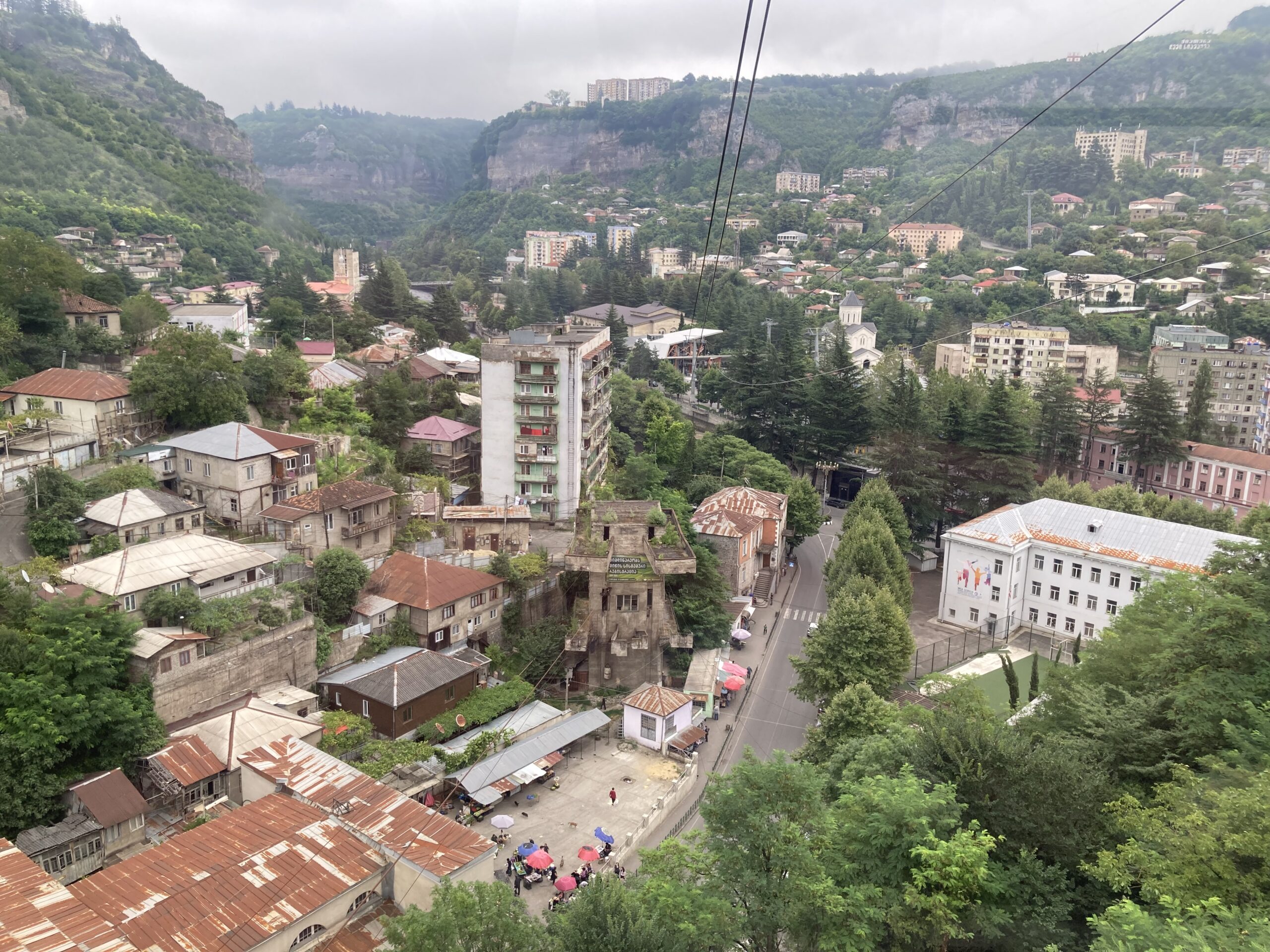
Yet another cable car I rode allowed me to take this wonderful shot, well, if it was not for the refractions due to the glass panel it would have been better… To see all those buildings jotting out of the green, it just reminded me of Tskaltubo. If Chiatura had even less people, and more abandoned buildings, it is easy to see just how nature would overrun it in a matter of few years. It seems already “half-eaten” but overgrown shrubs and trees.
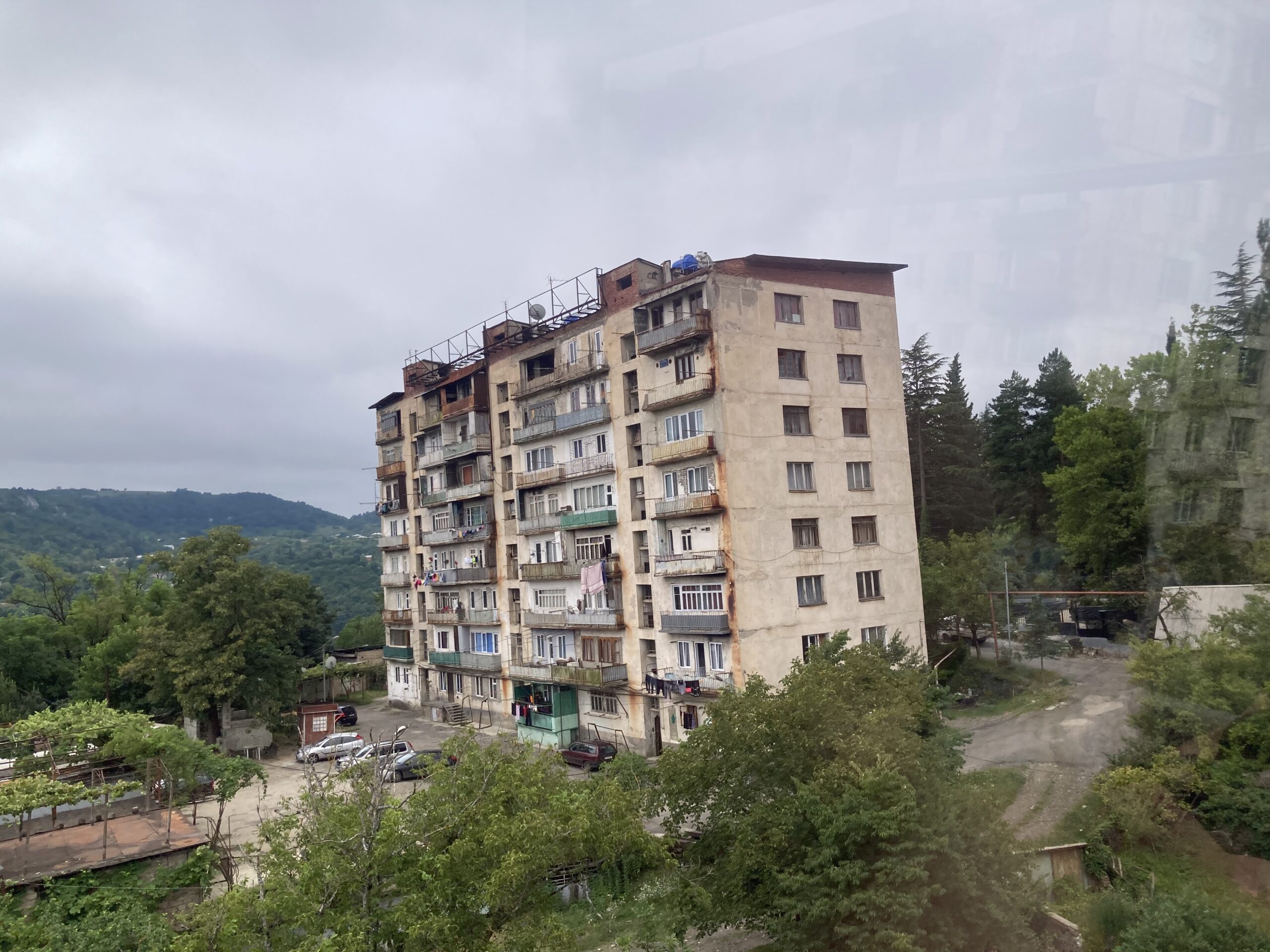
Eventually I took the last cable car I could take on that day, which brought me to a very residential part of the town, which seemed fuller than normal, but still mostly deserted. At least the cable car I was in had some actual local passengers though, so that was a good sign.
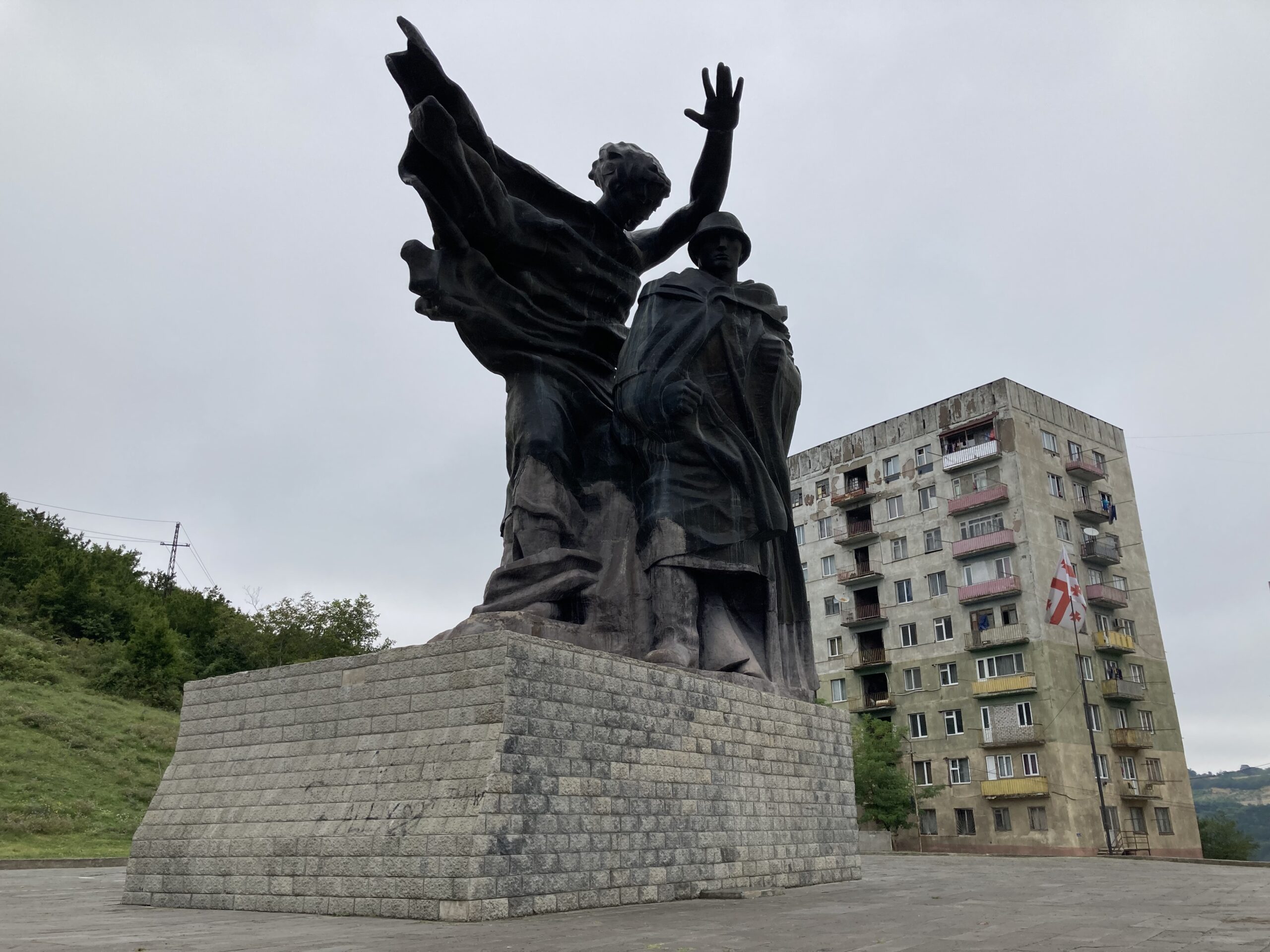
The highlight of this station was this Soviet-era war memorial, commemorating the Great Patriotic War, and the Georgians that fought in it. This was the first and only memorial of this kind that I saw in Georgia during this trip, so it certainly has a special place in my heart. It was an exceptionally impressive one as well, being quite huge, and situated atop a hill overlooking the town.
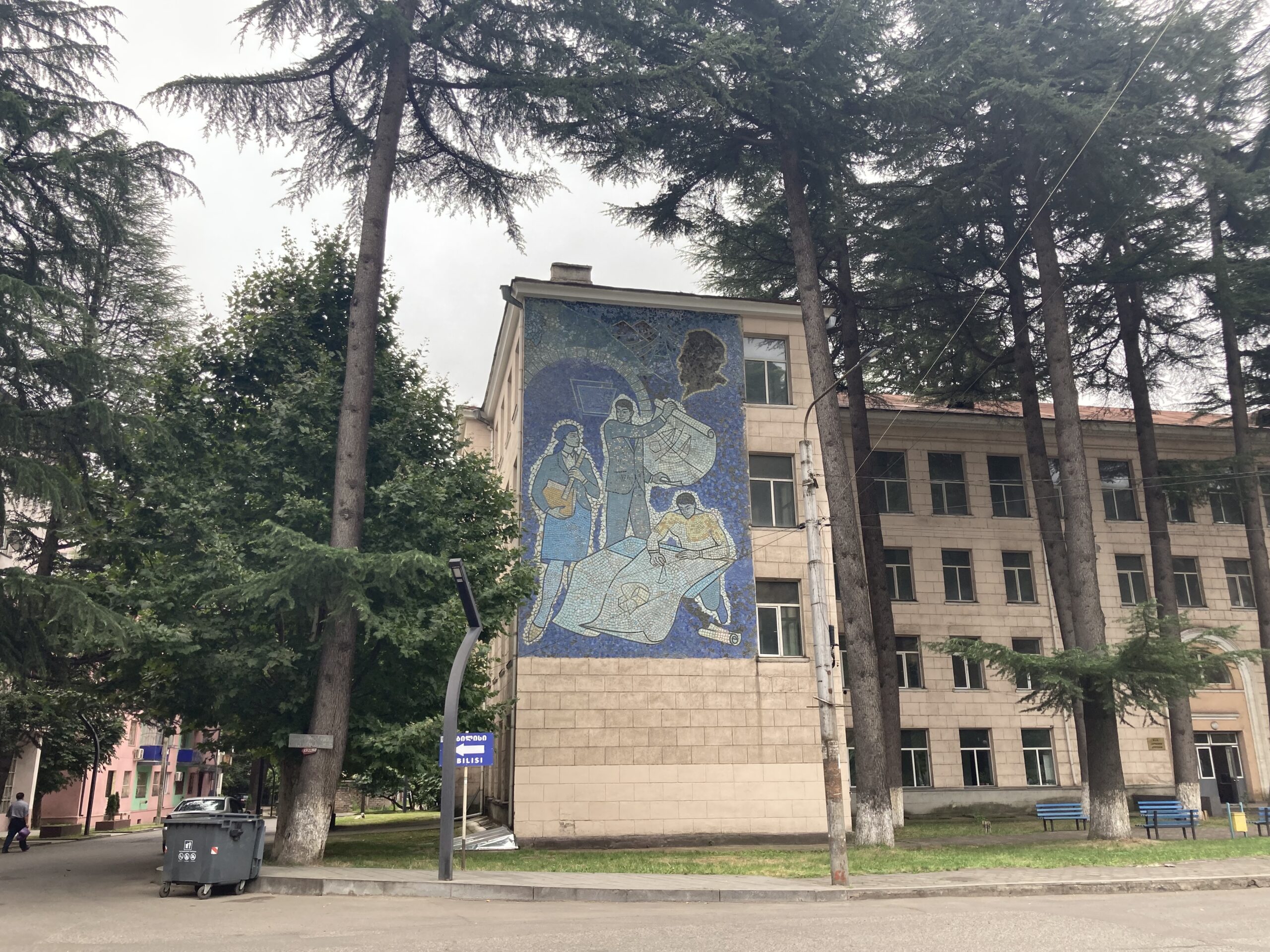
There are some other treasures to find in Chiatura, alas I did not have the time for all. Supposedly there is an abandoned cable car station a few kilometres to the north of town, where you can still see the coffee cup and the book of the last conductor that once worked there. There are also mosaics of all sizes, some hidden inside public pools that you could (reportedly) access if you ask nicely. I was not fortunate enough to see any of them, so this solitary mosaic had to suffice for now.
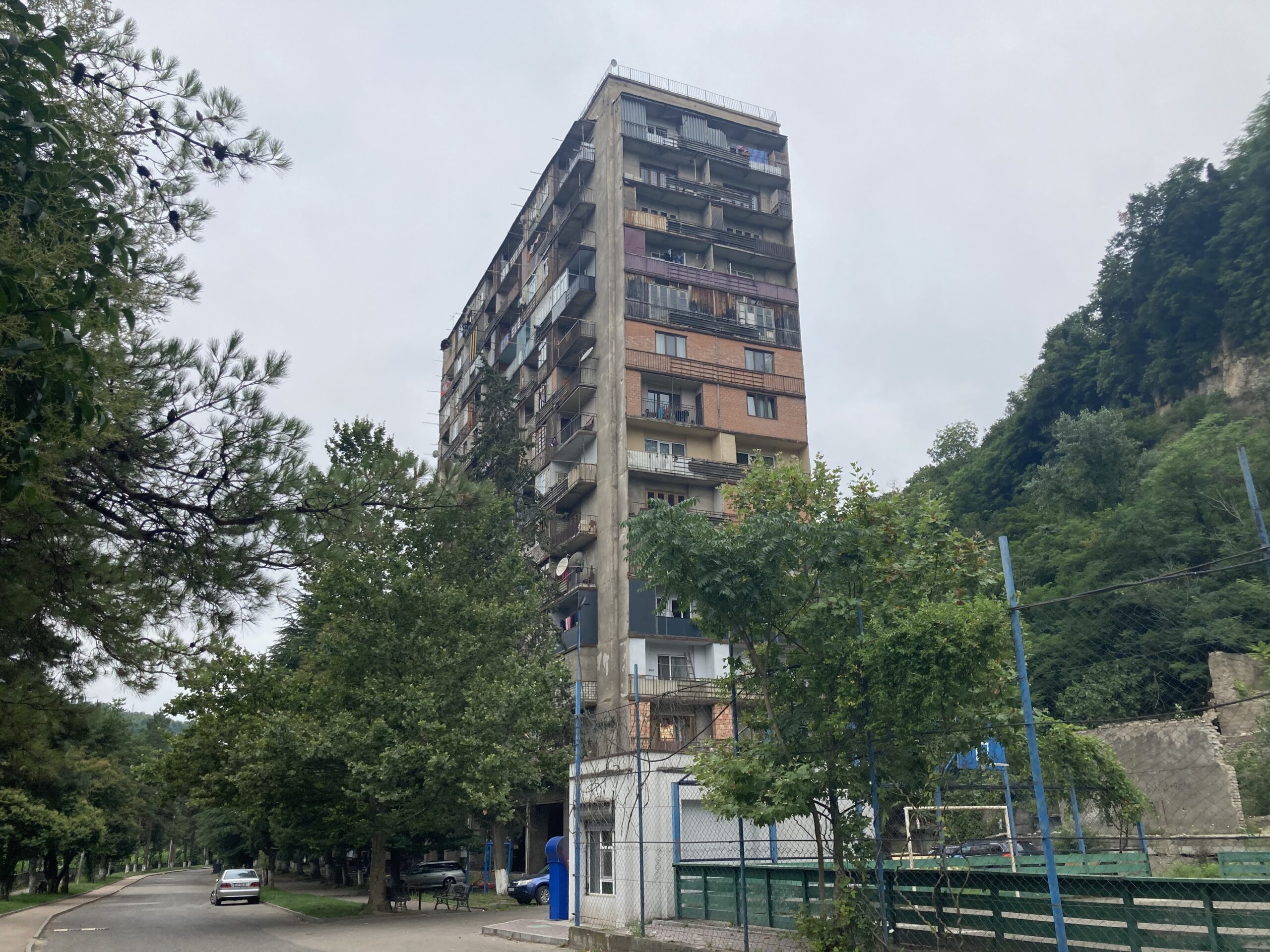
After being told that the last bus left Chiatura with no tickets left for me to buy for it, assuming that I was stuck here for the night, and later on being “surprised” by the fact that I could board the next “last” bus, I realized that I had my fill of Chiatura for the time being. Content that I could see it, however short my time here may be, and extremely happy to find out that I was not abandoned in this town with little to no money on me, I merrily made my way back home, to our apartment in Kutaisi. A part of Chiatura will remain with me, a part of me hoping that things will get better for the locals will always remain there. If I can ever come back here, I hope that I can see the town bustling again, as it presumably was at one point in time. Tourism could be a good way to go about doing that, so I really hope policymakers keep that in mind.
